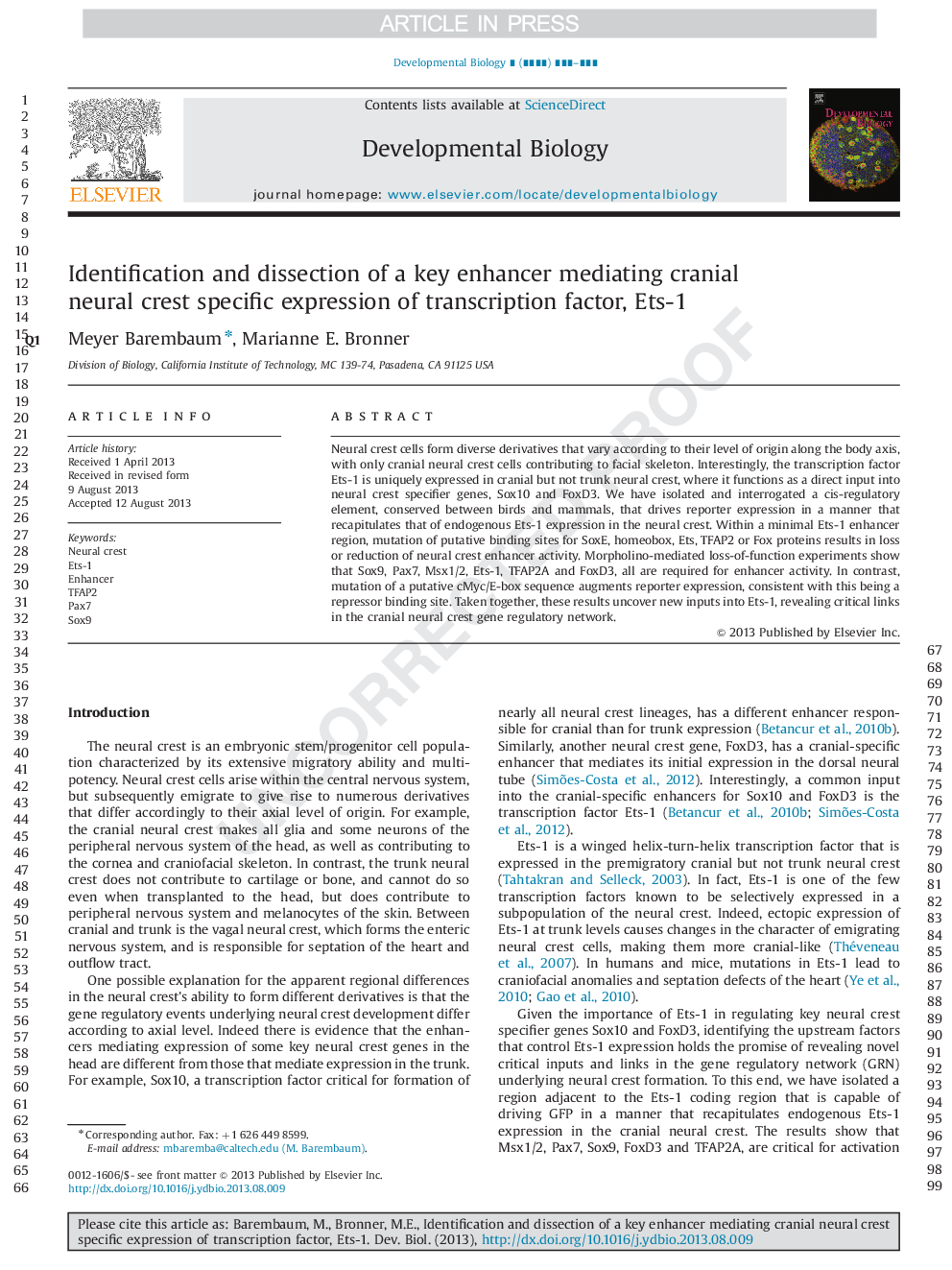| Article ID | Journal | Published Year | Pages | File Type |
|---|---|---|---|---|
| 10931994 | Developmental Biology | 2013 | 9 Pages |
Abstract
Neural crest cells form diverse derivatives that vary according to their level of origin along the body axis, with only cranial neural crest cells contributing to facial skeleton. Interestingly, the transcription factor Ets-1 is uniquely expressed in cranial but not trunk neural crest, where it functions as a direct input into neural crest specifier genes, Sox10 and FoxD3. We have isolated and interrogated a cis-regulatory element, conserved between birds and mammals, that drives reporter expression in a manner that recapitulates that of endogenous Ets-1 expression in the neural crest. Within a minimal Ets-1 enhancer region, mutation of putative binding sites for SoxE, homeobox, Ets, TFAP2 or Fox proteins results in loss or reduction of neural crest enhancer activity. Morpholino-mediated loss-of-function experiments show that Sox9, Pax7, Msx1/2, Ets-1, TFAP2A and FoxD3, all are required for enhancer activity. In contrast, mutation of a putative cMyc/E-box sequence augments reporter expression, consistent with this being a repressor binding site. Taken together, these results uncover new inputs into Ets-1, revealing critical links in the cranial neural crest gene regulatory network.
Related Topics
Life Sciences
Biochemistry, Genetics and Molecular Biology
Cell Biology
Authors
Meyer Barembaum, Marianne E. Bronner,
